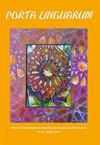在内容和语言综合学习(CLIL)科学课堂中通过任务进行语言学习
IF 2.1
4区 教育学
Q3 EDUCATION & EDUCATIONAL RESEARCH
引用次数: 21
摘要
本文介绍了一项关于中学包容性内容和语言综合学习(CLIL)课堂中语言学习的实验前研究结果,其中科学内容用英语教授。这次教学经历持续了四周。所采用的主要教学方法是使用学生在二对工作中完成的学习任务。通过使用该领域广泛使用的不同指标,本研究试图在测试前/处理/测试后的研究设计中衡量学生在流利性和词汇储备方面的收益。后测表明在评估指标方面取得了重大进展。该研究还表明,改进超越了纯粹的形式语言方面,有必要找到其他测量工具,以帮助我们捕捉这些改进的程度。样本的有限范围不允许我们对所采用的教学决策的适用性做出强有力的声明;然而,这些结果鼓励我们继续探索学生之间的合作如何影响CLIL学习本文章由计算机程序翻译,如有差异,请以英文原文为准。
Language learning through tasks in a content and language integrated learning (CLIL) science classroom
This paper presents the results of a pre-experimental study into language learning in inclusive Content and Language Integrated Learning (CLIL) classrooms at secondary school, in which Science content was taught in English. The pedagogical experience lasted four weeks. The main pedagogical approach followed was the use of learning tasks carried out by students working in dyads. Through the use different indicators extensively employed in the field, the study attempts to measure the gains that students show in fluency and lexical repertoire in a pretest / treatment / post-test research design. The post-test demonstrated significant progress in the assessed indicators. The study also showed that improvements transcend purely formal linguistic aspects and that it is necessary to find other measurement tools which may help us to capture the extent of those improvements. The limited scope of the sample does not allow us to make strong claims about the suitability of pedagogical decisions adopted; however the outcomes encourage us to continue to explore how cooperation among students influences learning in CLIL
求助全文
通过发布文献求助,成功后即可免费获取论文全文。
去求助
来源期刊

Porta Linguarum
Social Sciences-Education
CiteScore
1.70
自引率
16.70%
发文量
51
期刊介绍:
PORTA LINGUARUM is an international and interuniversity journal that specialises in foreign language didactics. Its aims to publish empirical studies, critical revisions, and theoretical models that relate to the many factors that influence the FL teaching and learning:
- The social and school context: the family’s social and cultural influence as well as the student’s mother language and its influence on the L2 learning process, etc.
- The students: their personal characteristics (age, gender, personality traits, etc.) as well as their attitudes, motivation, cognitive styles, etc.
- The FL teacher: the teacher’s mental representations, attitudes, motivation, individual characteristics, teaching methods, etc.
- Learning conditions and the learning process, variables that influence the teaching and learning processes in the classroom: efficiency of teaching strategies, teaching methods and techniques, second language acquisition processes, students and teachers interaction, effect of teaching resources and materials, etc.
- Learning outcomes: evaluation of procedures as well as the evaluation of the students’ communicative competence at different academic levels, etc.
 求助内容:
求助内容: 应助结果提醒方式:
应助结果提醒方式:


